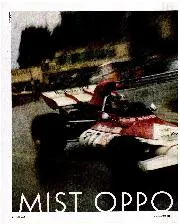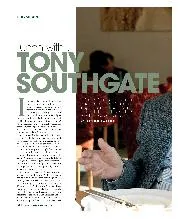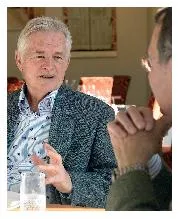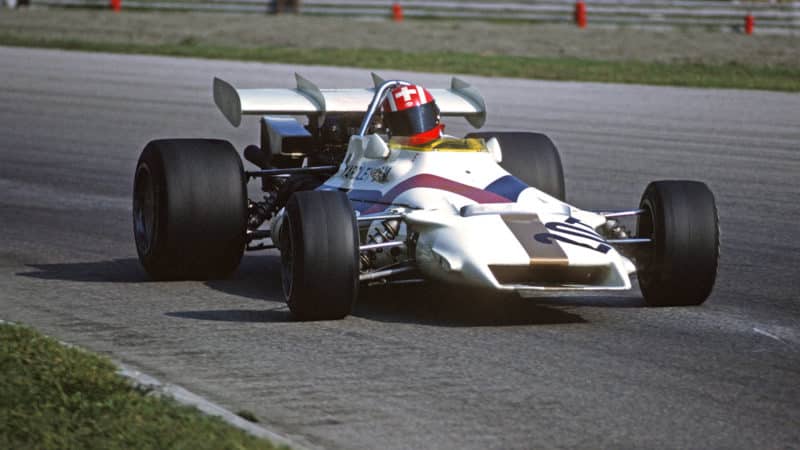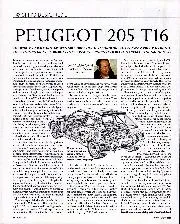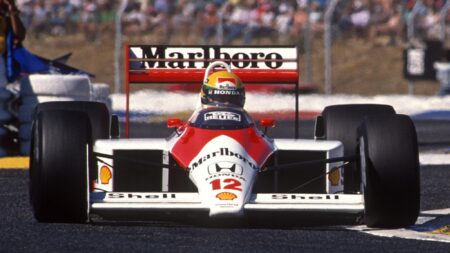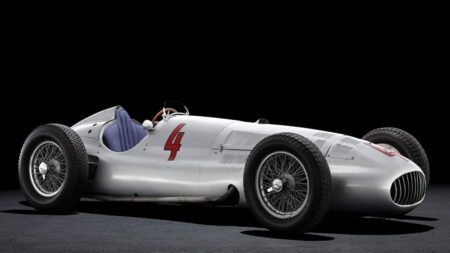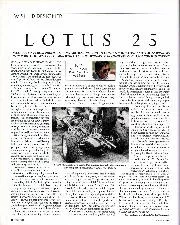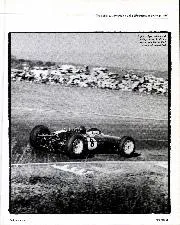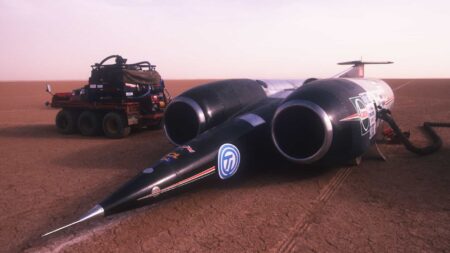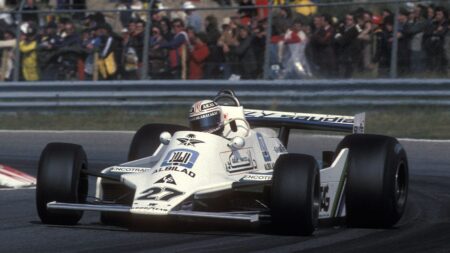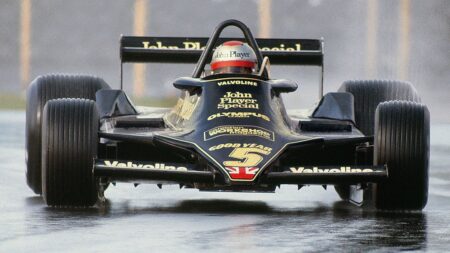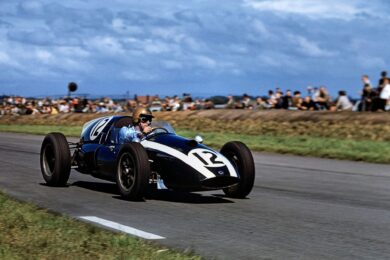It wasn’t revolutionary like the Lotus 25, but it was finely thought out, and it was widely adjustable. More importantly, the adjustments made a difference: if you changed the roll bar, it responded, which is an indication that the chassis is quite rigid and the geometry is well worked out. It would run with very soft tyres, which some cars couldn’t tolerate. Some can only nut with stiff suspension, which to me says the geometry is wrong because the rollcentres move around, the camber changes and the whole car loses its way. But if correctly designed it should cope with more travel, which helps the driver to get the feedback he needs. That was before ground effects, of course, when no part of the car was less than three inches from the ground.
Rear suspension used radius arms and links, pretty conventional, really; the only unusual thing was that at the front the springs and dampers were steeply angled. Rather than progressive springing, it was digressive, with the result that on a full fuel load damper effectiveness dropped off. That meant understeer was inevitable on full tanks, not helped by the tanks being rather forward. But in spite of that, Beltoise and Regazzoni, and later Lauda, could put it on the front row of any GP. Beltoise in particular got some fantastic results out of it. When Niki Lauda joined the team, he turned up at Ricard where we were testing. I didn’t know him at all, but he said he’d been at March and had driven the 711 with the Spitfire front wing, and he’d almost begun to wonder if he was in the right business. He just couldn’t make the car work, and the team said, ‘What’s the problem? Ronnie Peterson seems to manage.’ But when he drove the BRM he said, This is so much better. Now I know I was right; there was something wrong with the March.’
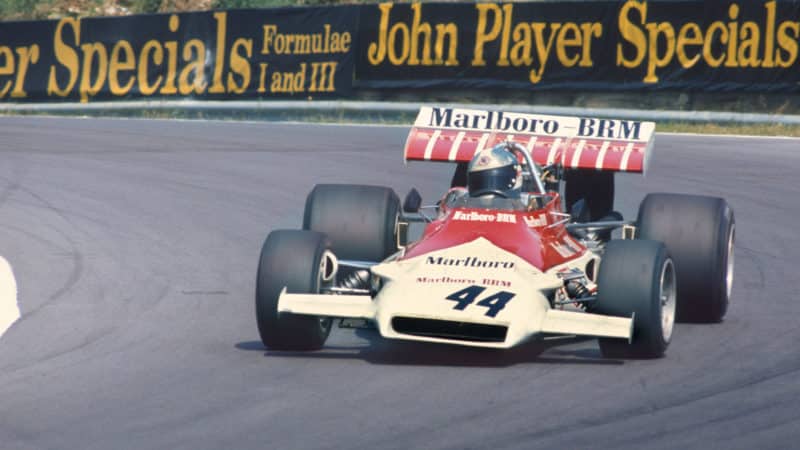
Beltoise at Brands in ’72
Grand Prix Photo
Niki was getting suicidal until he came to us and realised his instincts were right. And he went very rapidly from a lad to a team leader. Shame he left us when he did, but it says a lot for the quality of the car that it suited experienced drivers and still allowed someone inexperienced to develop his skills. Niki was the best at feedback; very precise. He could drive the car near its limits and still notice what it was doing. Regazzoni was quick but didn’t have the ability to describe it; I’m sure he felt it, he just couldn’t pass it on. I designed the P201, the triangular-section car, around Lauda; he was going to be our lead driver, but he went to Ferrari instead.
The 160’s structure had fabricated steel bulkheads with folded alloy interior sections and welded alloy exterior, individually hand-formed because of the complex curves. But it was a more difficult engine to package than most. If you had mounted that long V12 like a Cosworth, only bolted at the front, it wouldn’t have handled at all. So it had a monocoque extension which carried two mounts part-way back along the engine, then a tubular structure back to the bellhousing, so that it was only partly stressed.

